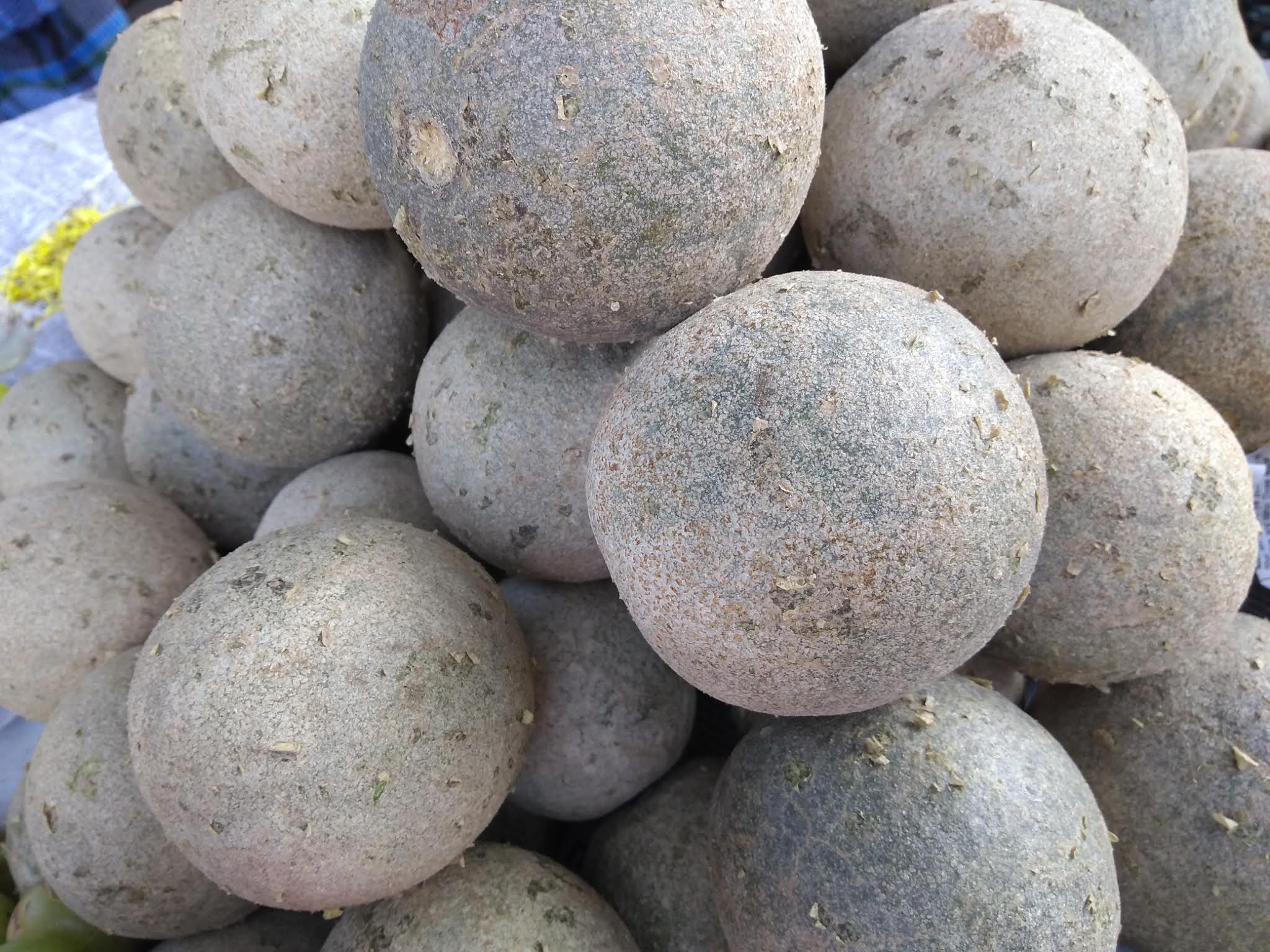Description
Wood apple is a fruit indigenous to Sri Lanka. Wood apple trees grow up to around 15 - 20 metres and live for around 50 – 70 years, and are extremely well adapted to Sri Lankan environments. Woodapple trees are commonly found in home gardens, especially in the dry and intermediate zones. The fruit has a unique sour-sweet taste and aromatic pulp, which is consumed fresh with sugar, made into jellies, jams, chutneys, and sherbets, or blended with milk and sugar syrup to create beverages and ice cream.
Two main forms exist: one with large, sweet-tasting fruits and another with small, acid fruits. In Sri Lanka, improved varieties include:
- ANK WOOD APPLE 01 (ACC53): Average fruit weight of 463g, dark white outer covering, pulp thickness of 4.06 mm.
- ANK WOOD APPLE (ACC63): Average fruit weight of 565g, dull white outer covering, thinner pulp (3.25 mm).
Planting requirements
Planting season: Best planted at the onset of the monsoon season, typically May-June or October-November.
Planting conditions:
| Propagation | Seeds, Grafting |
|---|---|
| Planting method | Usually grown from seed, the seedling plants appear in 5- 10 days. In four to six weeks it is transferred to pots consisting of compost, sand and top soil. Vegetative propagation methods like budding and grafting are also successful |
| Soil | Requires a soil pH of 5.8 to 6.5. Can thrive in a wide range of soil. A light sandy loamy soil that drains well is ideal |
| Water | Daily irrigation should be carried out during the early stages. Young plants require more irrigation than the older plants |
| Light | Full sunlight for optimal growth. Partial sunlight can slow down growth |
Growing conditions:
| Temperatures | It can grow in climates that vary in temperature from 48°C and -6°C |
|---|---|
| Soil | Well-draining soil with added organic matter. In Sri Lanka, red-yellow podzolic soils or reddish-brown earths are suitable. Apply organic compost or balanced fertilizers during the growing season to promote healthy growth |
| Water | In Sri Lanka's dry zone, regular watering is crucial, especially during prolonged dry spells. In wet zones, ensure proper drainage to prevent waterlogging |
| Pruning | Prune as needed to remove dead branches and maintain shape, which also improves air circulation and fruit production |
| Weed control | Remove weeds that can compete for nutrients |
Harvesting
Mature green fruit can be harvested typically from July to September in Sri Lanka
Curing
Wood apples should be cured at room temperature for about a week to allow the pulp to soften
Storage
Store wood apples in a cool, dry place for up to two weeks. In Sri Lanka's humid climate, storing in a well-ventilated area is crucial to prevent mold growth.
Protecting your plants
Pest control
Pest type:
- Deudorix isocrates
- Mealybugs
Symptoms:
- Deudorix isocrates: Larvae bore holes in leaves and young pods, feeding on parts inside the pods. Damaged fruits fall off before ripening.
- Mealybugs: Suck juice from near the stem of the fruit, causing fruit to drop. Fruits turn black due to fungi growing on sugar-containing secretions.
Control method:
Deudorix isocrates: For Deudorix isocrates, inspect and destroy fallen fruit to control the pest's life cycle
Mealybugs:
- Collect and destroy infected fruits
- Prune plants by removing old and unwanted branches
- Practice crop sanitation
- Use recommended insecticides for heavy infestations if necessary
In general:
- Use neem oil
- Apply traditional Sri Lankan pest control methods like spraying with a mixture of tobacco and soap water
Disease Control
Disease type: Fruit rot is a common issue in Sri Lanka's humid climate
Symptoms: Soft, discolored patches on the fruit, often with a foul odor
Management: Improve air circulation around the tree, avoid overhead irrigation, and remove affected fruits promptly
Sources
In addition to our General List of Sources (link), we used these specific references:
